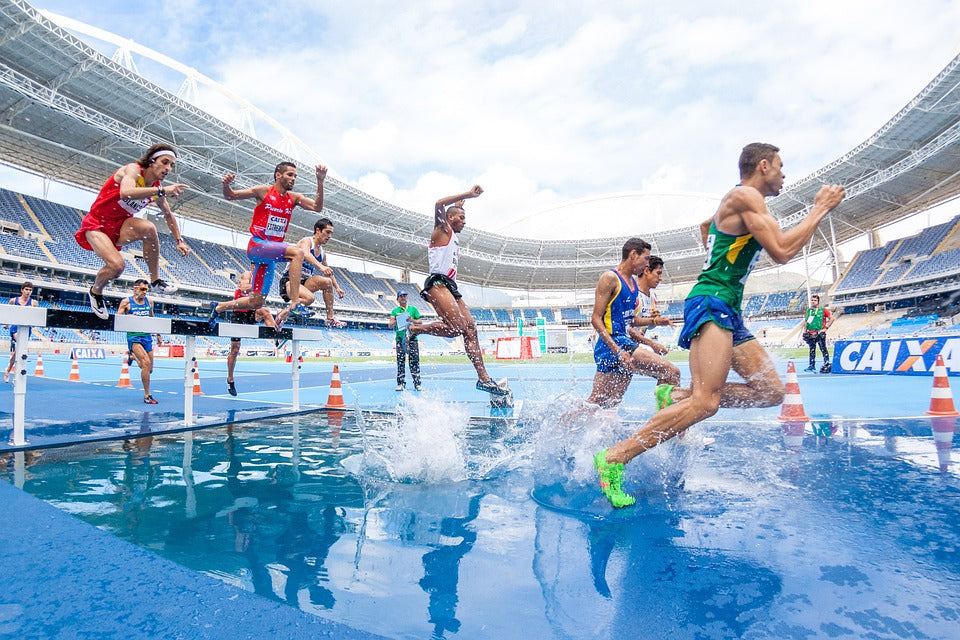With the growing interest in health and fitness, smart wearable devices play an important role in monitoring and analyzing exercise data. Sports watches and QRing smart rings are two popular exercise monitoring devices on the market today. In this article, we will discuss in detail how they detect and analyze sports data to help users choose the most suitable sports companion for themselves.
I. Detection and Analysis of Sports Watches
1. Multi-functional Sensors
Sports watches are usually equipped with a variety of sensors, including accelerometers, gyroscopes, GPS, heart rate sensors and so on. These sensors can comprehensively monitor the user's movement status and record data such as steps, distance, speed and heart rate.
2. Data Acquisition and Processing
The sports watch collects data in real time and analyzes it through the built-in processor. For example, through the accelerometer and gyroscope data, the watch can determine the user's type of exercise (such as running, cycling, swimming, etc.) and record the details of the exercise.
3. Heart rate monitoring
Heart rate monitoring is an important function of sports watches. The watch detects the user's heart rate through optical sensors to help the user understand the intensity of the exercise and adjust the training program according to the heart rate data to avoid over-training or under-exercising.
4. GPS Localization
The GPS function enables the sports watch to accurately record the user's exercise track and distance. This is especially important for outdoor sports such as running and cycling. Users can view the sports track to understand their sports routes and speed changes.
5. Data Analysis and Feedback
The sports watch provides users with detailed sports data analysis reports through the supporting cell phone application or computer software. These reports usually include information such as the length of exercise, calories consumed, changes in heart rate, and distribution of exercise intensity. Users can use these data to evaluate their own exercise performance and adjust their training programs according to the analysis results.
II. Detection and Analysis of QRing Smart Ring
1. Portable and Multi-functional Sensors
QRing smart ring has a variety of built-in sensors, including accelerometer, heart rate sensor and blood oxygen sensor. Although it is small in size, it is powerful enough to monitor the user's exercise data comprehensively.
2. Data Acquisition and Processing
QRing collects the user's movement data in real time through sensors and analyzes it initially through the built-in processing chip. Similar to a sports watch, QRing can also record step count, exercise duration, heart rate and other information.
3. Heart rate and blood oxygen monitoring
QRing smart ring continuously monitors the user's heart rate and blood oxygen level during exercise. Through these data, users can understand their exercise intensity and physical status, and adjust their training program in time.
4. Exercise Type Recognition
Although QRing does not have GPS function, it can recognize different types of exercise (e.g. walking, running, cycling, etc.) by analyzing accelerometer data. This enables QRing to provide users with detailed data records under different exercise modes.
5. Data Analysis and Feedback
QRing provides users with detailed exercise data analysis reports through the accompanying mobile application. The report includes information such as exercise duration, step count, heart rate change, calories burned, etc. The user can use these data to understand his/her own exercise behavior. Users can use these data to understand their own exercise performance and adjust their training program according to the analysis results.
III. Comparison of the two
1. Functional comprehensiveness
Sports watches are usually more comprehensive in function, especially in outdoor sports. Their GPS function can accurately record the movement track, which is suitable for outdoor sports enthusiasts such as running and cycling. QRing smart rings, on the other hand, pay more attention to portability and comfort, suitable for daily wear and indoor sports monitoring.
2. Ease of Use
QRing smart ring is compact and comfortable to wear, and will not interfere with daily activities and sports. Sports watches, on the other hand, are powerful but can be inconvenient in certain situations (e.g., swimming or prolonged wear).
3. Data Accuracy
In terms of GPS positioning and sports track recording, sports watches have a clear advantage. However, when it comes to heart rate and blood oxygen monitoring, the QRing smart ring is on par with the sports watch, providing accurate data.
4. Battery life
Due to its smaller size, the battery life of QRing smart ring is usually longer and users do not need to charge it frequently. Sports watches, on the other hand, have a shorter battery life due to more features and need to be recharged more frequently.
Conclusion
Both sports watches and QRing smart rings have unique advantages in sports data detection and analysis. The sports watch is comprehensive and suitable for outdoor sports and professional training, while the QRing smart ring, with its portable and comfortable design, is suitable for daily wear and comprehensive health management. Users can choose the smart device that best suits them according to their sports needs and lifestyle habits, helping to improve their healthy life and sports performance.

